 | ÐлекÑÑоннÑй компоненÑ: LTC1749 | СкаÑаÑÑ:  PDF PDF  ZIP ZIP |
1749f.pm6
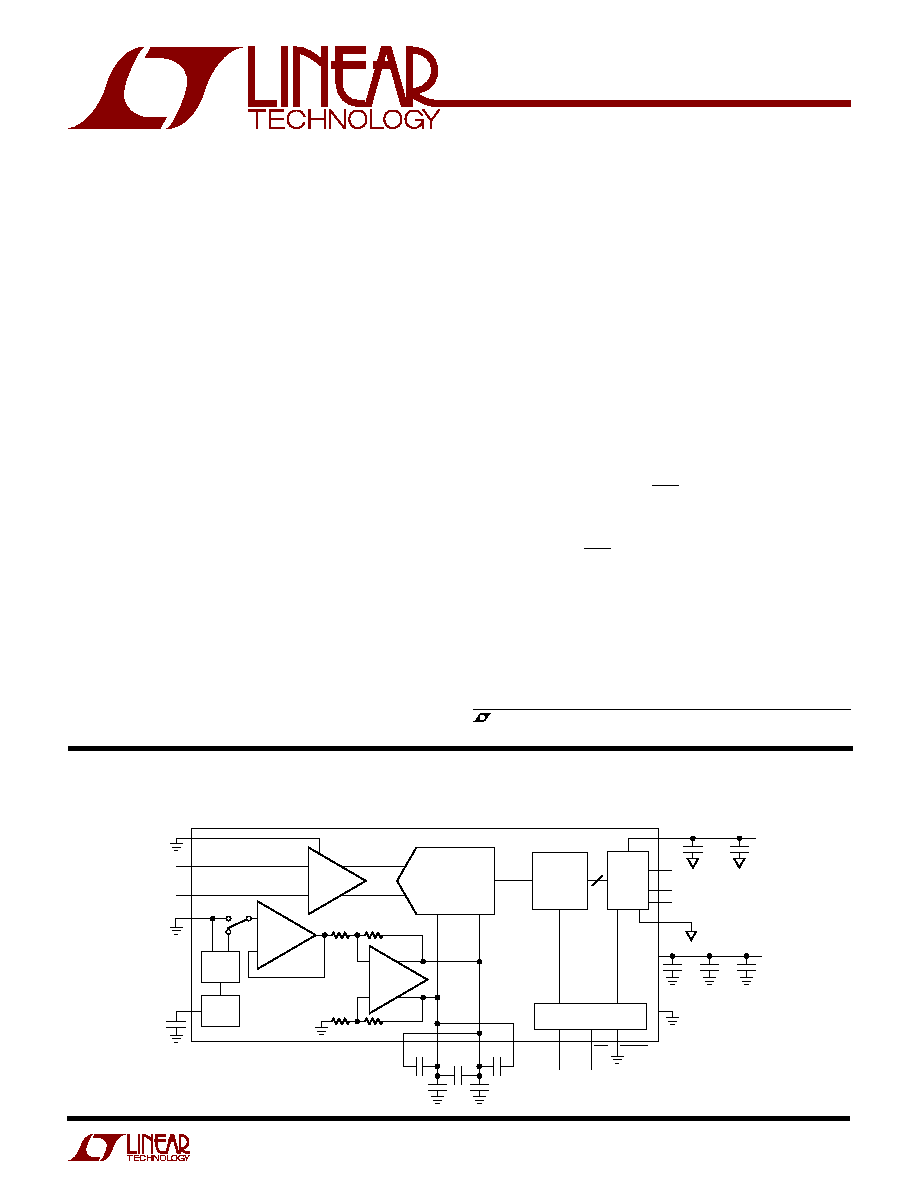
1
LTC1749
1749f
12-Bit, 80Msps
Wide Bandwidth ADC
s
Sample Rate: 80Msps
s
PGA Front End (2.25V
P-P
or 1.35V
P-P
Input Range)
s
71.8dB SNR and 87dB SFDR (PGA = 0)
s
70.2dB SNR and 87dB SFDR (PGA = 1)
s
500MHz Full Power Bandwidth S/H
s
No Missing Codes
s
Single 5V Supply
s
Power Dissipation: 1.45W
s
Two Pin Selectable Reference Values
s
Data Ready Output Clock
s
Pin Compatible 14-Bit 80Msps Device (LTC1750)
s
48-Pin TSSOP Package
s
Direct IF Sampling
s
Telecommunications
s
Receivers
s
Cellular Base Stations
s
Spectrum Analysis
s
Communications Test Equipment
s
Undersampling
, LTC and LT are registered trademarks of Linear Technology Corporation.
The LTC
®
1749 is an 80Msps, 12-bit A/D converter de-
signed for digitizing wide dynamic range signals up to
frequencies of 500MHz. The input range of the ADC can be
optimized with the on-chip PGA sample-and-hold circuit
and flexible reference circuitry.
The LTC1749 has a highly linear sample-and-hold circuit
with a bandwidth of 500MHz. The SFDR is 80dB with an
input frequency of 250MHz. Ultralow jitter of 0.15ps
RMS
allows undersampling of IF frequencies with minimal
degradation in SNR. DC specs include
±
1LSB INL and no
missing codes.
The digital interface is compatible with 5V, 3V, 2V and
LVDS logic systems. The ENC and ENC inputs may be
driven differentially from PECL, GTL and other low swing
logic families or from single-ended TTL or CMOS. The low
noise, high gain ENC and ENC inputs may also be driven
by a sinusoidal signal without degrading performance. A
separate output power supply can be operated from 0.5V
to 5V, making it easy to connect directly to low voltage
DSPs or FIFOs.
The 48-pin TSSOP package with a flow-through pinout
simplifies the board layout.
80Msps, 12-Bit ADC with a 2.25V Differential Input Range
DESCRIPTIO
U
FEATURES
APPLICATIO S
U
BLOCK DIAGRA
W
12-BIT
PIPELINED ADC
12
S/H
CIRCUIT
±
1.125V
DIFFERENTIAL
ANALOG INPUT
A
IN
+
PGA
A
IN
SENSE
V
CM
4.7
µ
F
DIFF AMP
REFLA
REFHB
GND
1749 BD
ENC
4.7
µ
F
1
µ
F
1
µ
F
0.1
µ
F
0.1
µ
F
REFHA
REFLB
BUFFER
RANGE
SELECT
2V
REF
CORRECTION
LOGIC AND
SHIFT
REGISTER
OUTPUT
LATCHES
CONTROL LOGIC
OV
DD
V
DD
OGND
0.5V TO 5V
5V
0.1
µ
F
1
µ
F
1
µ
F
1
µ
F
D11
D0
CLKOUT
·
·
·
ENC
DIFFERENTIAL
ENCODE INPUT
MSBINV
0.1
µ
F
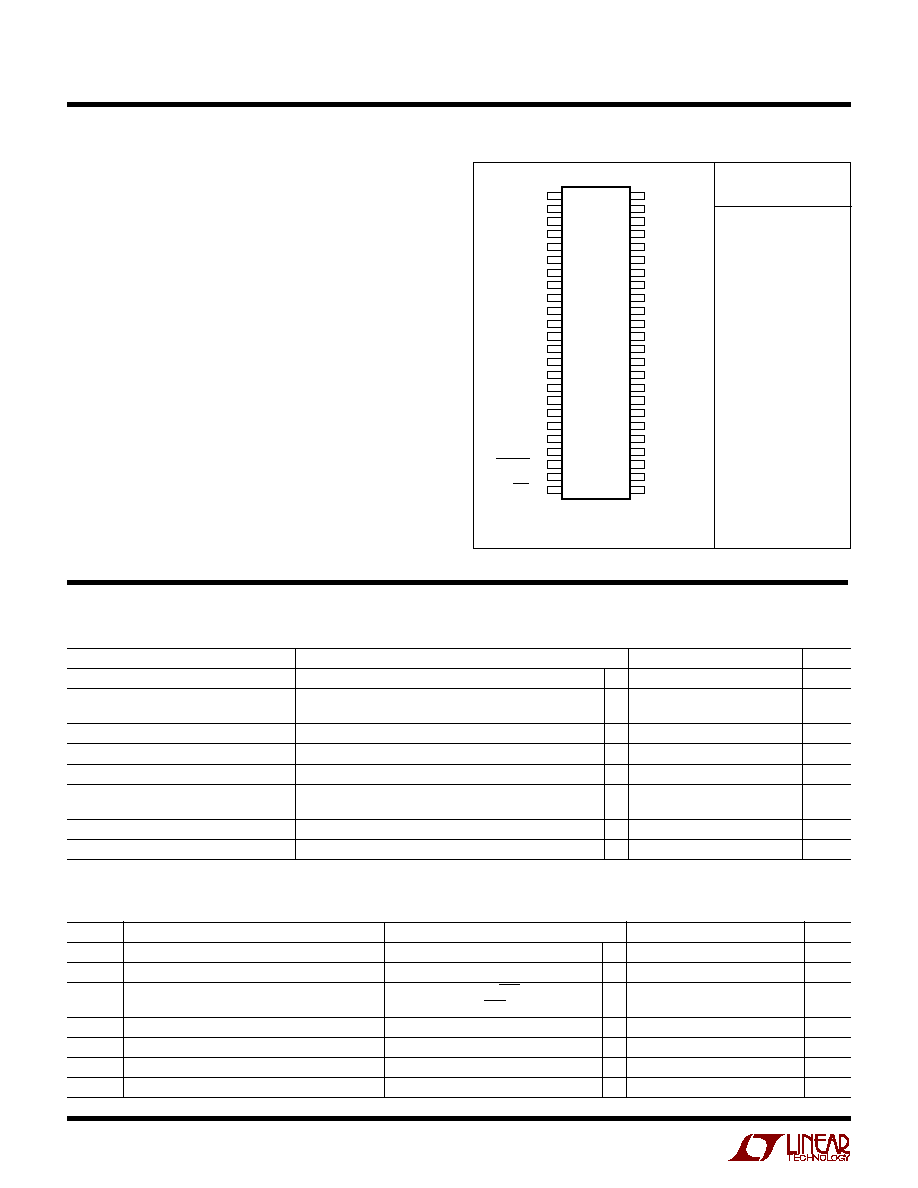
2
LTC1749
1749f
PARAMETER
CONDITIONS
MIN
TYP
MAX
UNITS
Resolution (No Missing Codes)
q
12
Bits
Integral Linearity Error
(Note 6)
1.0
±
0.4
1.0
LSB
q
1.5
1.5
LSB
Differential Linearity Error
q
0.8
±
0.2
0.8
LSB
Offset Error
(Note 7) External Reference (V
SENSE
= 1.125V, PGA = 0)
35
±
8
35
mV
Gain Error
External Reference (V
SENSE
= 1.125V, PGA = 0)
3.5
±
1
3.5
%FS
Full-Scale Tempco
Internal Reference
±
40
ppm/
°
C
External Reference (V
SENSE
= 1.125V)
±
20
ppm/
°
C
Offset Tempco
±
20
µ
V/
°
C
Input Referred Noise (Transition Noise)
V
SENSE
= 1.125V, PGA = 0
0.23
LSB
RMS
ORDER PART
NUMBER
OV
DD
= V
DD
(Notes 1, 2)
Supply Voltage (V
DD
) ............................................. 5.5V
Analog Input Voltage (Note 3) .... 0.3V to (V
DD
+ 0.3V)
Digital Input Voltage (Note 4) ..... 0.3V to (V
DD
+ 0.3V)
Digital Output Voltage ................. 0.3V to (V
DD
+ 0.3V)
OGND Voltage .............................................. 0.3V to 1V
Power Dissipation ............................................ 2000mW
Operating Temperature Range
LTC1749C ............................................... 0
°
C to 70
°
C
LTC1749I ............................................ 40
°
C to 85
°
C
Storage Temperature Range ................. 65
°
C to 150
°
C
Lead Temperature (Soldering, 10 sec).................. 300
°
C
LTC1749CFW
LTC1749IFW
T
JMAX
= 150
°
C,
JA
= 35
°
C/W
The
q
indicates specifications which apply over the full operating
temperature range, otherwise specifications are at T
A
= 25
°
C. (Note 5)
ABSOLUTE
M
AXI
M
U
M
RATINGS
W
W
W
U
PACKAGE/ORDER I
N
FOR
M
ATIO
N
W
U
U
CO VERTER CHARACTERISTICS
U
SYMBOL
PARAMETER
CONDITIONS
MIN
TYP
MAX
UNITS
V
IN
Analog Input Range (Note 8)
4.75V
V
DD
5.25V
q
±
0.7 to
±
1.125
V
I
IN
Analog Input Leakage Current
0 < A
IN
+
, A
IN
< V
DD
q
1
1
µ
A
C
IN
Analog Input Capacitance
Sample Mode ENC < ENC
6.9
pF
Hold Mode ENC > ENC
2.4
pF
t
ACQ
Sample-and-Hold Acquisition Time
q
5
6
ns
t
AP
Sample-and-Hold Acquisition Delay Time
0
ns
t
JITTER
Sample-and-Hold Acquisition Delay Time Jitter
0.15
ps
RMS
CMRR
Analog Input Common Mode Rejection Ratio
1.5V < (A
IN
= A
IN
+
) < 3V
80
dB
The
q
indicates specifications which apply over the full operating temperature range, otherwise
specifications are at T
A
= 25
°
C. (Note 5)
A ALOG I PUT
U
U
Consult LTC Marketing for parts specified with wider operating temperature ranges.
1
2
3
4
5
6
7
8
9
10
11
12
13
14
15
16
17
18
19
20
21
22
23
24
TOP VIEW
FW PACKAGE
48-LEAD PLASTIC TSSOP
48
47
46
45
44
43
42
41
40
39
38
37
36
35
34
33
32
31
30
29
28
27
26
25
SENSE
V
CM
GND
A
IN
+
A
IN
GND
V
DD
V
DD
GND
REFLB
REFHA
GND
GND
REFLA
REFHB
GND
V
DD
V
DD
GND
V
DD
GND
MSBINV
ENC
ENC
OF
OGND
D11
D10
D9
OV
DD
D8
D7
D6
D5
OGND
GND
GND
D4
D3
D2
OV
DD
D1
D0
NC
NC
OGND
CLKOUT
PGA
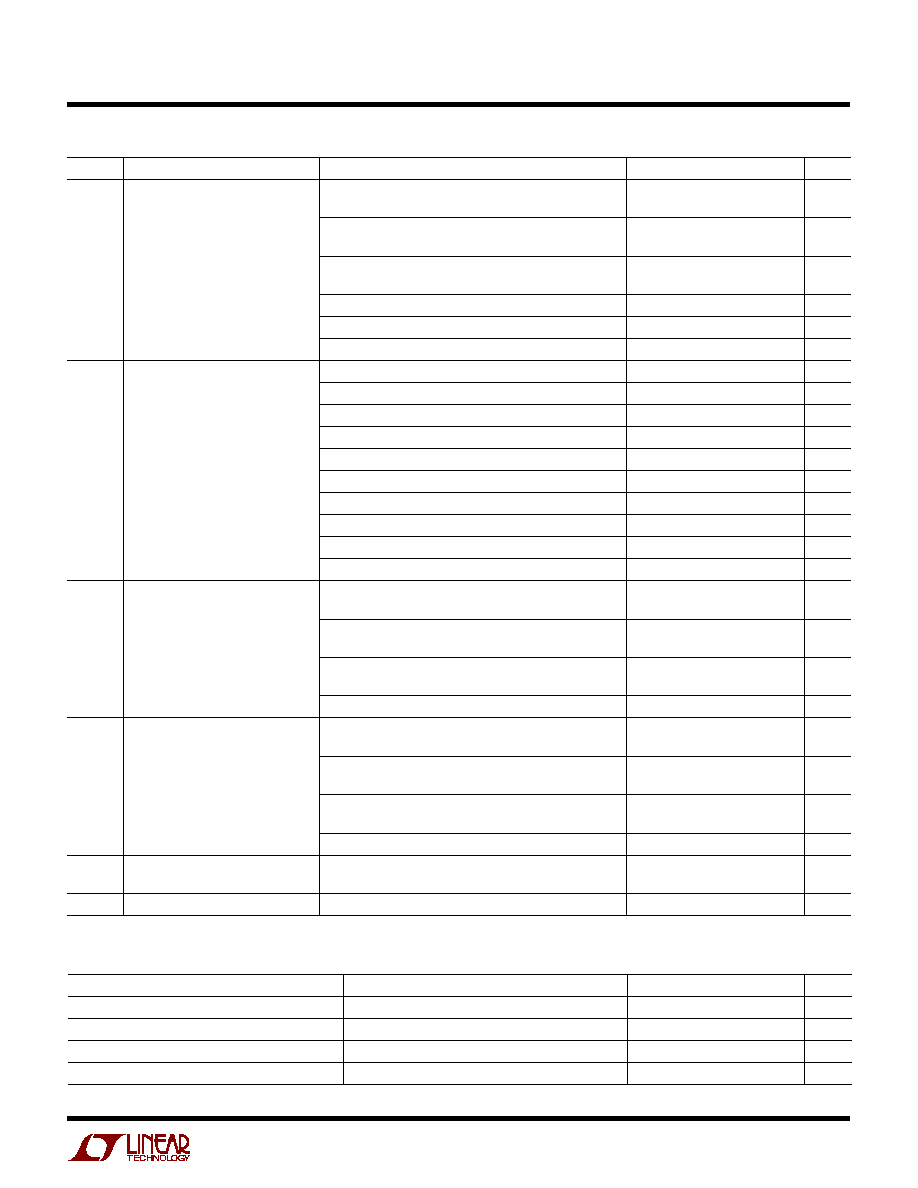
3
LTC1749
1749f
PARAMETER
CONDITIONS
MIN
TYP
MAX
UNITS
V
CM
Output Voltage
I
OUT
= 0
1.95
2
2.05
V
V
CM
Output Tempco
I
OUT
= 0
±
30
ppm/
°
C
V
CM
Line Regulation
4.75V
V
DD
5.25V
3
mV/V
V
CM
Output Resistance
1mA
I
OUT
1mA
4
(Note 5)
I TER AL REFERE CE CHARACTERISTICS
U
U
U
SYMBOL
PARAMETER
CONDITIONS
MIN
TYP
MAX
UNITS
SNR
Signal-to-Noise Ratio
5MHz Input Signal (PGA = 0)
71.8
dB
5MHz Input Signal (PGA = 1)
70.2
dB
30MHz Input Signal (PGA = 0)
70.5
71.7
dB
30MHz Input Signal (PGA = 1)
70.2
dB
70MHz Input Signal (PGA = 0)
71.4
dB
70MHz Input Signal (PGA = 1)
68.8
70.1
dB
140MHz Input Signal (PGA = 1)
69.8
dB
250MHz Input Signal (PGA = 1)
69.3
dB
350MHz Input Signal (PGA = 1)
67.4
dB
SFDR
Spurious Free Dynamic Range
5MHz Input Signal (PGA = 0)
87
dB
5MHz Input Signal (PGA = 1)
87
dB
30MHz Input Signal (PGA = 0) (HD2 and HD3)
76
87
dB
30MHz Input Signal (PGA = 0) (Other)
83
90
dB
70MHz Input Signal (PGA = 0)
85
dB
70MHz Input Signal (PGA = 1) (HD2 and HD3)
76
87
dB
70MHz Input Signal (PGA = 1) (Other)
83
90
dB
140MHz Input Signal (PGA = 1)
84
dB
250MHz Input Signal (PGA = 1)
80
dB
350MHz Input Signal (PGA = 1)
74
dB
S/(N + D)
Signal-to-(Noise + Distortion) Ratio
5MHz Input Signal (PGA = 0)
71.7
dB
5MHz Input Signal (PGA = 1)
70.1
dB
30MHz Input Signal (PGA = 0)
71.6
dB
30MHz Input Signal (PGA = 1)
70.0
dB
70MHz Input Signal (PGA = 0)
71.2
dB
70MHz Input Signal (PGA = 1)
69.9
dB
250MHz Input Signal (PGA = 1)
68.6
dB
THD
Total Harmonic Distortion
5MHz Input Signal, First 5 Harmonics (PGA = 0)
87
dB
5MHz Input Signal, First 5 Harmonics (PGA = 1)
87
dB
30MHz Input Signal, First 5 Harmonics (PGA = 0)
87
dB
30MHz Input Signal, First 5 Harmonics (PGA = 1)
87
dB
70MHz Input Signal, First 5 Harmonics (PGA = 0)
85
dB
70MHz Input Signal, First 5 Harmonics (PGA = 1)
87
dB
250MHz Input Signal (PGA = 1)
78
dB
IMD
Intermodulation Distortion
f
IN1
= 2.52MHz, f
IN2
= 5.2MHz (PGA = 0)
87
dBc
f
IN1
= 2.52MHz, f
IN2
= 5.2MHz (PGA = 1)
87
dBc
Sample-and-Hold Bandwidth
R
SOURCE
= 50
500
MHz
T
A
= 25
°
C, A
IN
= 1dBFS (Note 5), V
SENSE
= V
DD
DY
A
IC ACCURACY
U
W
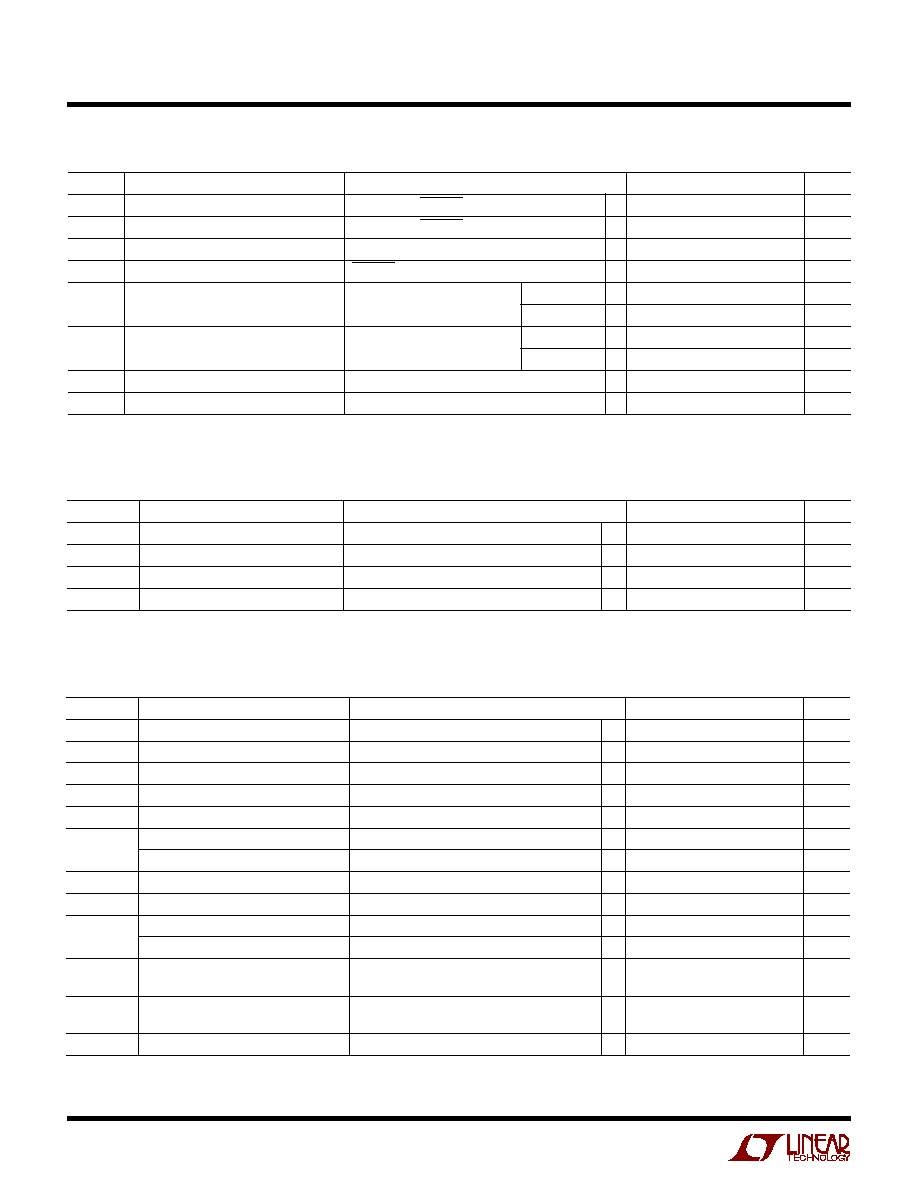
4
LTC1749
1749f
SYMBOL
PARAMETER
CONDITIONS
MIN
TYP
MAX
UNITS
t
0
ENC Period
(Note 9)
q
12.5
2000
ns
t
1
ENC High
(Note 8)
q
6
1000
ns
t
2
ENC Low
(Note 8)
q
6
1000
ns
t
3
Aperture Delay
(Note 8)
0
ns
t
4
ENC to CLKOUT Falling
C
L
= 10pF (Note 8)
q
1
2.4
4
ns
t
5
ENC to CLKOUT Rising
C
L
= 10pF (Note 8)
t
1
+ t
4
ns
For 80Msps 50% Duty Cycle
C
L
= 10pF (Note 8)
q
7.25
8.65
10.25
ns
t
6
ENC to DATA Delay
C
L
= 10pF (Note 8)
q
2
4.9
7.2
ns
t
7
ENC to DATA Delay (Hold Time)
(Note 8)
q
1.4
3.4
4.7
ns
t
8
ENC to DATA Delay (Setup Time)
C
L
= 10pF (Note 8)
t
0
t
6
ns
For 80Msps 50% Duty Cycle
C
L
= 10pF (Note 8)
q
5.3
7.6
10.5
ns
t
9
CLKOUT to DATA Delay (Hold Time),
(Note 8)
q
6
ns
80Msps 50% Duty Cycle
t
10
CLKOUT to DATA Delay (Setup Time),
C
L
= 10pF (Note 8)
q
2.1
ns
80Msps 50% Duty Cycle
Data Latency
5
cycles
The
q
indicates specifications which apply over the full operating temperature
range, otherwise specifications are at T
A
= 25
°
C. (Note 5)
TI I G CHARACTERISTICS
U
W
SYMBOL
PARAMETER
CONDITIONS
MIN
TYP
MAX
UNITS
V
DD
Positive Supply Voltage
4.75
5.25
V
I
DD
Positive Supply Current
q
290
338
mA
P
DIS
Power Dissipation
q
1.45
1.69
W
OV
DD
Digital Output Supply Voltage
0.5
V
DD
V
The
q
indicates specifications which apply over the full operating temperature
range, otherwise specifications are at T
A
= 25
°
C. (Note 5)
POWER REQUIRE E TS
W
U
SYMBOL
PARAMETER
CONDITIONS
MIN
TYP
MAX
UNITS
V
IH
High Level Input Voltage
V
DD
= 5.25V, MSBINV and PGA
q
2.4
V
V
IL
Low Level Input Voltage
V
DD
= 4.75V, MSBINV and PGA
q
0.8
V
I
IN
Digital Input Current
V
IN
= 0V to V
DD
q
±
10
µ
A
C
IN
Digital Input Capacitance
MSBINV and PGA Only
1.5
pF
V
OH
High Level Output Voltage
OV
DD
= 4.75V
I
O
= 10
µ
A
4.74
V
I
O
= 200
µ
A
q
4
4.74
V
V
OL
Low Level Output Voltage
OV
DD
= 4.75V
I
O
= 160
µ
A
0.05
V
I
O
= 1.6mA
q
0.1
0.4
V
I
SOURCE
Output Source Current
V
OUT
= 0V
50
mA
I
SINK
Output Sink Current
V
OUT
= 5V
50
mA
The
q
indicates specifications which apply over the full
operating temperature range, otherwise specifications are at T
A
= 25
°
C. (Note 5)
DIGITAL I PUTS A D DIGITAL OUTPUTS
U
U
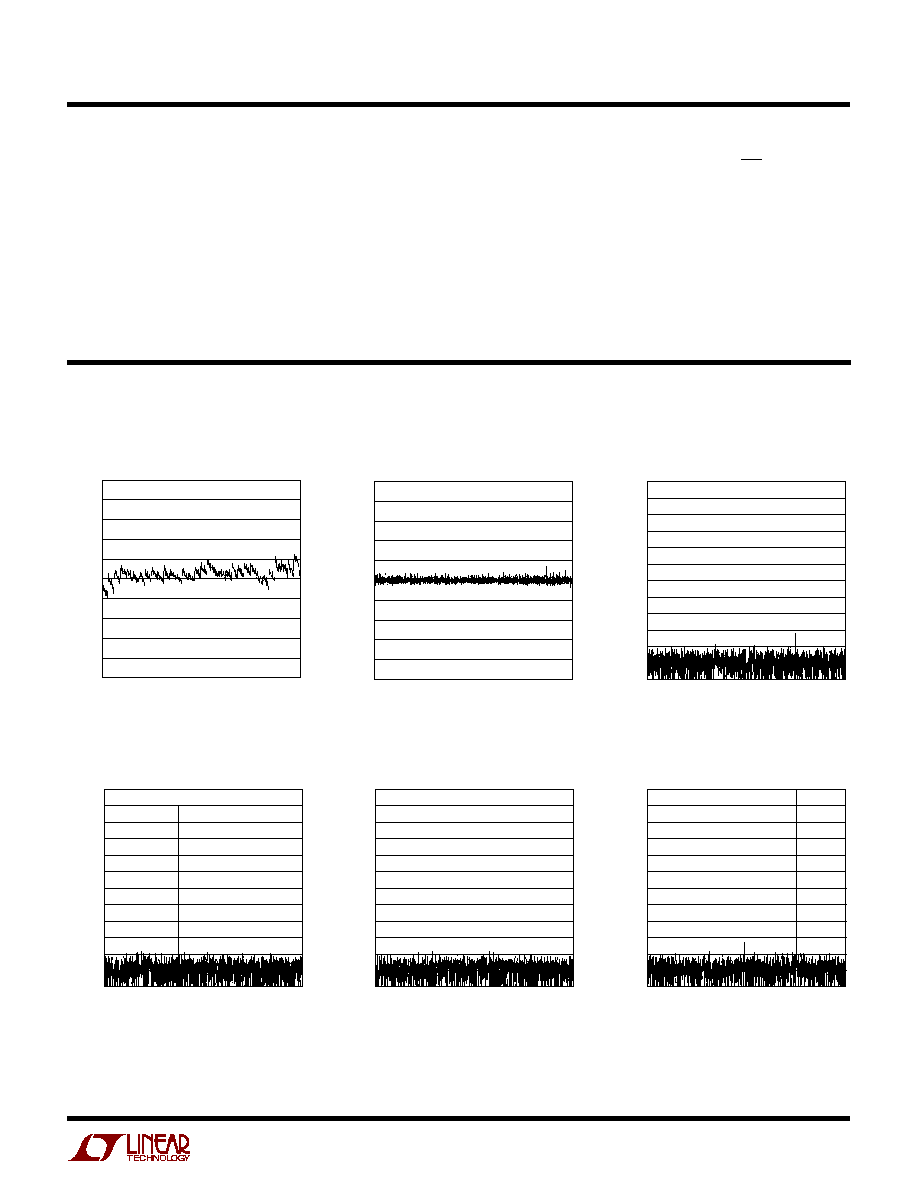
5
LTC1749
1749f
Note 1: Absolute Maximum Ratings are those values beyond which the life
of a device may be impaired.
Note 2: All voltage values are with respect to GND (unless otherwise
noted).
Note 3: When these pin voltages are taken below GND or above V
DD
, they
will be clamped by internal diodes. This product can handle input currents
of greater than 100mA below GND or above V
DD
without latchup.
Note 4: When these pin voltages are taken below GND, they will be
clamped by internal diodes. This product can handle input currents of
>100mA below GND without latchup. These pins are not clamped to V
DD
.
Note 5: V
DD
= 5V, f
SAMPLE
= 80MHz, differential ENC/ENC = 2V
P-P
80MHz
sine wave, input range =
±
1.125V differential, unless otherwise specified.
Note 6: Integral nonlinearity is defined as the deviation of a code from a
straight line passing through the actual endpoints of the transfer curve.
The deviation is measured from the center of the quantization band.
Note 7: Bipolar offset is the offset voltage measured from 0.5 LSB
when the output code flickers between 0000 0000 0000 and
1111 1111 1111.
Note 8: Guaranteed by design, not subject to test.
Note 9: Recommended operating conditions.
ELECTRICAL CHARACTERISTICS
TYPICAL PERFOR A CE CHARACTERISTICS
U
W
INL
OUTPUT CODE
0
1.0
ERROR (LSB)
0.8
0.4
0.2
0
1.0
0.4
1024
2048
1749 G01
0.6
0.6
0.8
0.2
3072
4096
OUTPUT CODE
0
1.0
ERROR (LSB)
0.8
0.4
0.2
0
1.0
0.4
1024
2048
1749 G02
0.6
0.6
0.8
0.2
3072
4096
FREQUENCY (MHz)
0
AMPLITUDE (dBFS)
60
30
20
40
1749 G03
70
80
120
10
20
30
5
15
25
35
100
0
10
40
50
90
110
DNL
8192 Point FFT, f
IN
= 15MHz,
1dB, PGA = 0
8192 Point FFT, f
IN
= 30.2MHz,
1dB, PGA = 0
8192 Point FFT, f
IN
= 15MHz,
20dB, PGA = 0
8192 Point FFT, f
IN
= 15MHz,
10dB, PGA = 0
FREQUENCY (MHz)
0
AMPLITUDE (dBFS)
60
30
20
40
1749 G04
70
80
120
10
20
30
5
15
25
35
100
0
10
40
50
90
110
FREQUENCY (MHz)
0
AMPLITUDE (dBFS)
60
30
20
40
1749 G05
70
80
120
10
20
30
5
15
25
35
100
0
10
40
50
90
110
FREQUENCY (MHz)
0
AMPLITUDE (dBFS)
60
30
20
40
1749 G06
70
80
120
10
20
30
5
15
25
35
100
0
10
40
50
90
110




